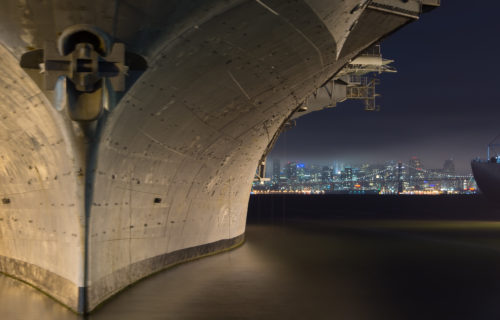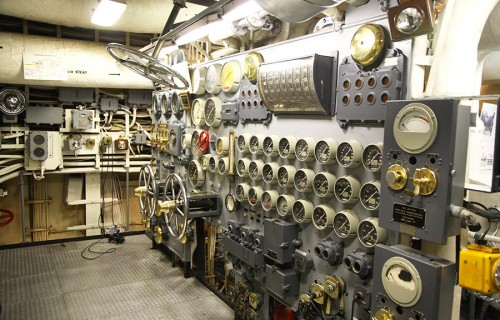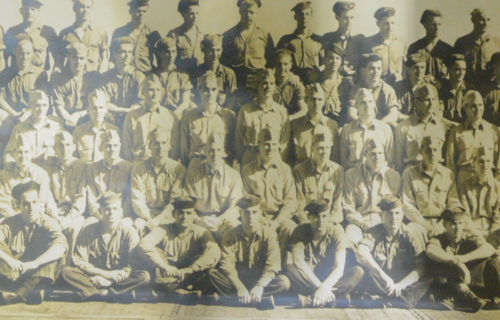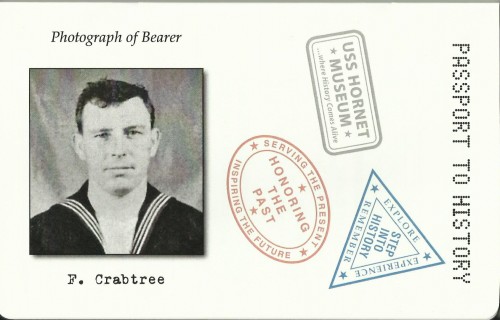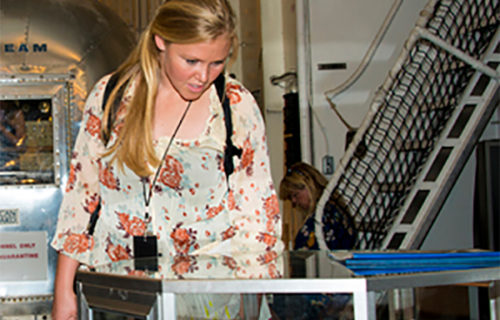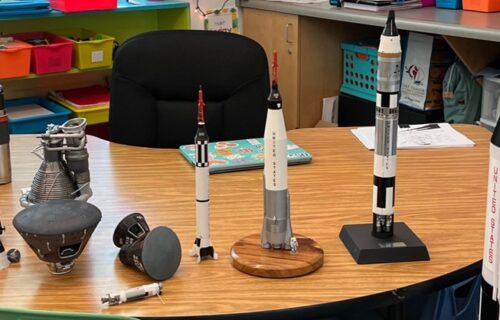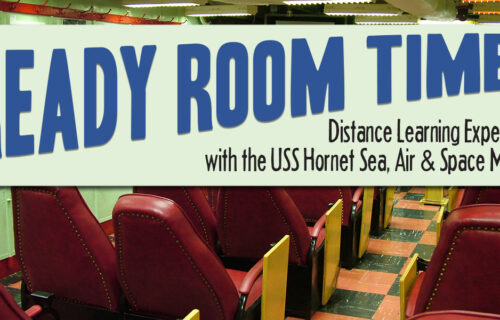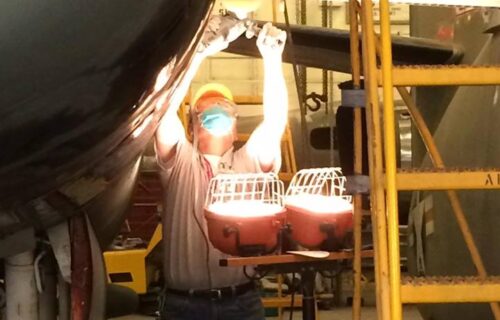The goal of each of the Museum’s educational program is to use our unique environment to teach science and history concepts in an interactive and fun manner and each program features a tour and hands-on activities. For a maximum ship experience, try one of the overnight stays! Homeschools & Scout Groups Qualify for Field Trip Rates.
-
All reservations must be made at least 1 week in advance
-
Private docents are $40.00 for school rate for 3 hours if class is under 15
-
All ship safety protocol must be followed
-
Please Note: Field Trips may still book on days that the ship is closed to the public
Questions? Contact us at EDU@uss-hornet.org.
Overnight Programs
Grades 2-12
The ultimate overnight experience for Scouts, Youth Groups, Schools, and Families!
STEM to Stern
Grades K-12
Our daytime field trip with a STEM focus that can be tailored for school groups of all ages!
Step into History
Grades 8-12
Learn 20th Century U.S. History while visiting five different historical stations aboard USS Hornet.
Field Trip at Sea
Grades K-12
Docent-led tours highlighting Hornet’s history and NASA’s Apollo missions.
Classroom Splashdown!
Grades K-12
“How We Landed Astronauts on the Moon” Have one of our knowledgeable docents speak to your group or class about the Apollo Program.
Virtual Learning
Grades K-12
Join us as we deliver a virtual educational adventure to your classroom.
TEACHING RESOURCES
Museum Field Trip FAQs
How far in advance do I need to make a reservation for my group?
All reservations are required at least one (1) week before your planned visit.
I am coming with a Home School or Youth Organization group. Can I come on a field trip?
Yes, you may make a reservation as an organized group, but we do ask that all payments are made as a single unit rather than individual payments from families.
Can we bring Lunches and eat them on board?
You are more than welcome to bring lunch aboard the Museum. We can store your lunch for you and we have several areas for your students to eat, including our Officers’ Mess and Flight Deck. Please remember that backpacks are not allowed except for medical purposes.
How can we add the Flight Simulator to our Program?
Most of our Educational Tours and Programs have pricing options available to add on Flight Simulator ride tickets that you can add on to your reservation when completing our Reservation Form. It is an additional charge per person. The ride is six (6) minutes long and holds fifteen (15) people at a time. These arrangements need to be made before your group’s arrival. The height restriction for our Flight Simulator is 38 inches so younger school groups may not be able to use it.
Some people in my group have Accessibility concerns. What are my options?
As a National and State Historic Landmark we are unfortunately not entirely accessible to those with mobility impairments or other concerns. For more information on Accessibility, please CLICK HERE.
What is Parking like and where can our bus drop off our group?
The USS Hornet Sea, Air & Space Museum has a huge parking lot adjacent to the pier where you may park for free. If you have a bus, the bus is allowed to drop off in front of the ship, but it must return to the main lot and park there. For more information, visit our Plan Your Visit page.
What happens after I submit my Reservation Form?
After you complete your Reservation Form, you will receive an estimated field trip invoice via email as confirmation within 10 business days. The payment is due upon arrival, but payment in advance is preferred. We do except all major credit cards on site.
What should we do when we arrive to the Museum?
When you arrive, it is recommended that your group meets on the pier and then enter the ship as one unit. If you arrive early for your field trip and before 10AM when the Museum officially opens to the public you may be asked to wait on the pier until your field trip officially starts as the Museum may not be ready for visitors.
What is the required Adult:Child ratio to visit the Museum?
Youth Group tours work best when there is one adult for every four children. The Museum requires at least one adult for every 8 children. Children must be with an adult at all times.
Can we purchase food at the Museum?
Snacks and Beverages are available from vending machines on the main deck every day.
Weekdays: A concession truck is available on the pier around 1PM.
Weekends: Hot dogs, hamburgers, and other snacks can be purchased on the Hangar Deck at the concession stand.
If you would like to pre-order food, Box Lunches are available at $8.50 per person.
Planning for Shopping?
You may want to allow extra time for purchasing souvenirs and gifts in the Ship’s Store. On our Reservation Form, we ask if you would like for our Ship’s Store to be an actual stop on your tour or if you would prefer to avoid it either all together or give your group time to shop after the official field trip ends.
STEM-H Teacher Resources
The USS Hornet Sea, Air & Space Museum is pleased to share with fellow educators a selection of valuable STEM naval related lesson plans for their learning spaces.
STEM-H (STEM-History) was a summer educator fellowship program offered by the Naval Historical Foundation (NHF) at the United Sates Navy Museum. Teachers from around the country spent a week at the museum and its related galleries to design a lesson plan incorporating naval history and STEM. For example, a lesson plan on sonar was developed using the Cold War Gallery and its submarine artifacts.
These lessons were then posted on the www.usnavymuseum.org website as a resource for others. This project was partially funded by a grant from the Office of Naval Research, in which NHF partnered with the USS Hornet Sea, Air & Space Museum and the United States Naval Academy. The Hornet Education Department has since adopted selected STEM-H lessons to provide a resource and model for other naval history museums and educators in general to adapt curriculum to their unique settings.
Available USS Hornet STEM- H Lesson Plans
Crash(less) Landing- The Design Process and Apollo 11
Communication Station– The Combat Information Center aboard the USS Hornet
Making Waves–Sonar, Radar, and Communication aboard the USS Hornet
To the Moon, and Back-Programming and Apollo 11
A Dot and Dash, a Ping and a Flash– Naval History and Non-verbal Communication
Tower Building–Physics and Technology aboard the USS Hornet
Under Pressure-Air Pressure and Desalinization aboard the USS Hornet
Introduction
This is a 5-part video series about the Space Race and the Apollo 11 & 12 missions which USS Hornet served as the recovery vehicle for. This series is presented by USS Hornet’s own Bill Miklos.
Bill Miklos has a BS and MS in Aerospace Mechanical Engineering from the University of Notre Dame. He then served 13 years as an officer in the US Air Force in hardware development and acquisition assignments involving flight dynamics, headquarters program management and satellite bus design. After serving in the Air Force, he was employed by Lockheed Martin Space Systems for 23 years. He held system engineering and management positions in satellite design and ground system development for the Milstar satellite system and was Space Segment Director of the follow-on to Milstar, the Advanced EHF Satellite. Before he retired in 2011, he was the Director of Launch and Operations Readiness for the launch of the first AEHF satellite and supported launch team rehearsals, launch activities and early orbit operations. He now enjoys being a docent at the Hiller Aviation Museum and the USS Hornet Sea, Air and Space Museum where he also supports the Education Department with a short course on the Space Race and the Apollo Program. He is also serving on the Board of Directors of the Vista Center for the Blind and Visually Impaired.


